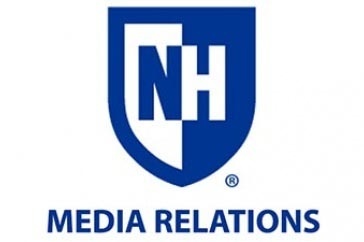UNH Report Shows Positive Changes for New Hampshire Estuaries But Challenges Remain

DURHAM, N.H.—A new report by the Piscataqua Region Estuaries Partnership (PREP) at the University of New Hampshire highlights positive developments in the Great Bay and Hampton-Seabrook Estuaries, as well as the Piscataqua Region Watershed. However, researchers say while some issues seemed to have stabilized there is still a magnitude of challenges yet to be addressed.
“We’re encouraged by the positive changes, which are a clear indication of how partnerships in the Piscataqua Region and working together over the last five years can make a difference,” said Kalle Matso, PREP director. “However, there are still concerns related to climate change, warming waters, pollution, development and other issues alerting our estuaries.”
Some of the progress outlined in the 2023 State of Our Estuaries report is the increase in migratory fish, the highest counts since 1992, and a significant improvement in the number of oysters in the Great Bay with over five million oysters at six natural reefs in 2020 and 2021. The last time there were more than 5 million oysters in the estuary was in 1998.
“One of the reasons we live here is the beauty of the area,” said Matso. “From the car, or going for a walk, it looks beautiful but for those of us who go underwater on a regular basis, we see the changes and the significant hurdles we still have continuing to protect and restore our watershed.”
One of those hurdles is an increase in pollution and nitrogen loading coming from non-wastewater sources. The report shows that non-point source nitrogen loading is up 15% which can lead to unhealthy and unsightly algae blooms in tributaries and less sunlight for underwater grasses. Another issue is sediments which have been increasing over the last several decades and are troublesome because they can bury oysters and block sunlight, but trends point to some decreases in recent years.
Researchers say the nitrogen loading and sediments are influenced in part by increased precipitation and extreme weather. More storms generate more runoff, washing more nutrients and sediments into the estuaries. They point to forecast trends for more extreme weather and emphasize the need to include these calculations when improving land conservation and stormwater management.
The report also outlines how continued collaboration between state agencies, town managers and scientists has led to a number of encouraging developments:
- Overall, 35 out of 52 communities in the Piscataqua Region Watershed have some level of stormwater standards.
- Eelgrass acreage in Portsmouth Harbor and along the N.H. coast continues to expand.
- Wastewater treatment plant nitrogen levels for communities that discharge to the Great Bay Estuary are at their lowest point since annual data collection began in 2003.
- The region’s oyster aquaculture industry has never been more vibrant; it produced nearly a million oysters in 2021 and 30% of those were used for restoration efforts.
This report was funded in part by the U.S. Environmental Protection Agency. Additional support was provided by the New Hampshire Department of Environmental Services, municipalities in the Piscataqua Region Watershed, and the Critical Advances for Our Estuaries Initiative supported by the Town of Durham. The Report and additional resources can be found at: StateofOurEstuaries.org
The University of New Hampshire inspires innovation and transforms lives in our state, nation, and world. More than 16,000 students from all 50 states and 71 countries engage with an award-winning faculty in top-ranked programs in business, engineering, law, health and human services, liberal arts and the sciences across more than 200 programs of study. As one of the nation’s highest-performing research universities, UNH partners with NASA, NOAA, NSF and NIH, and receives more than $110 million in competitive external funding every year to further explore and define the frontiers of land, sea and space.
Latest News
-
May 14, 2024
-
May 7, 2024
-
April 26, 2024
-
April 16, 2024
-
April 16, 2024
















































